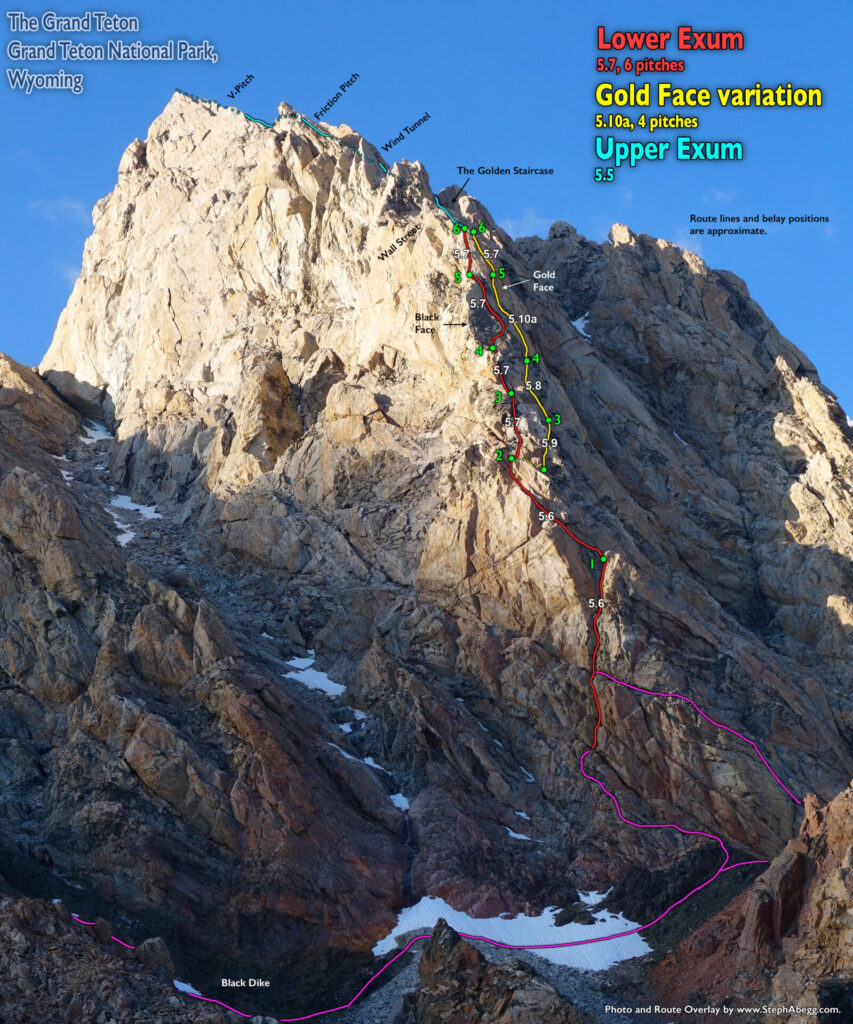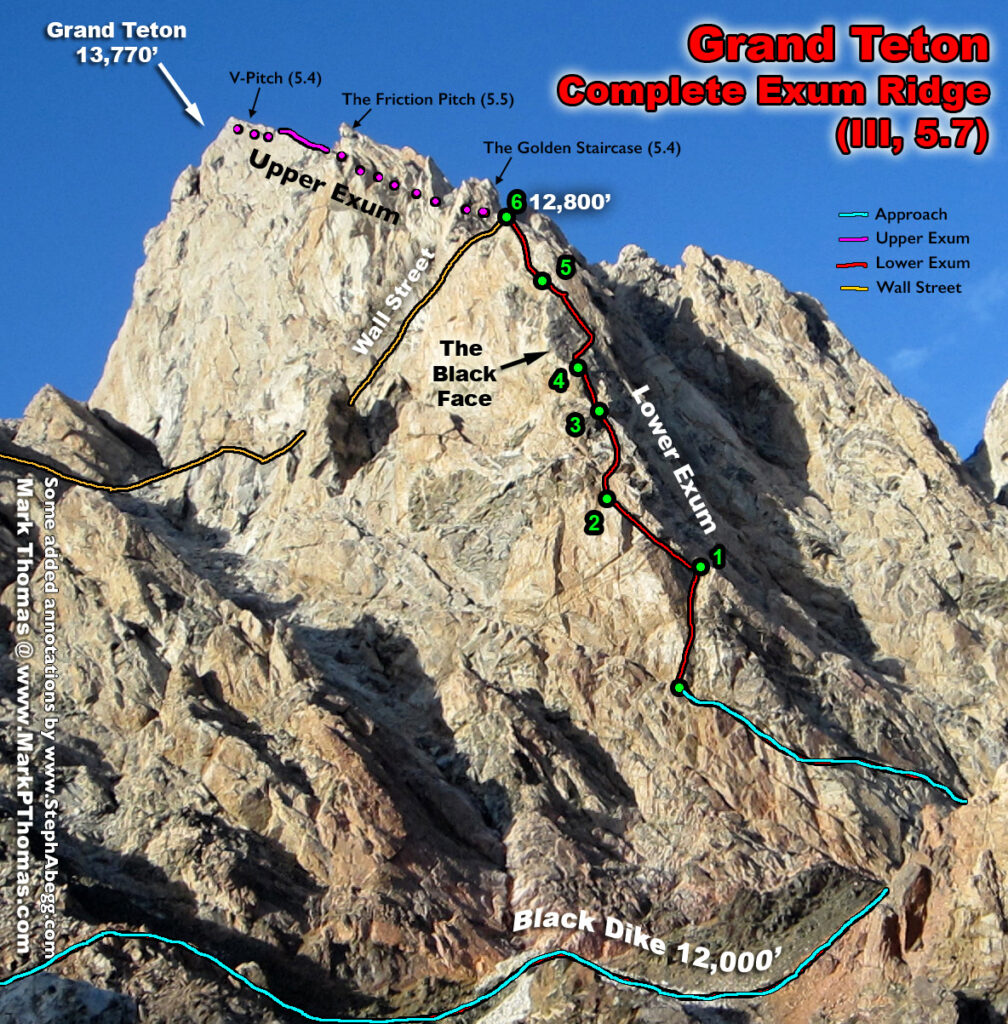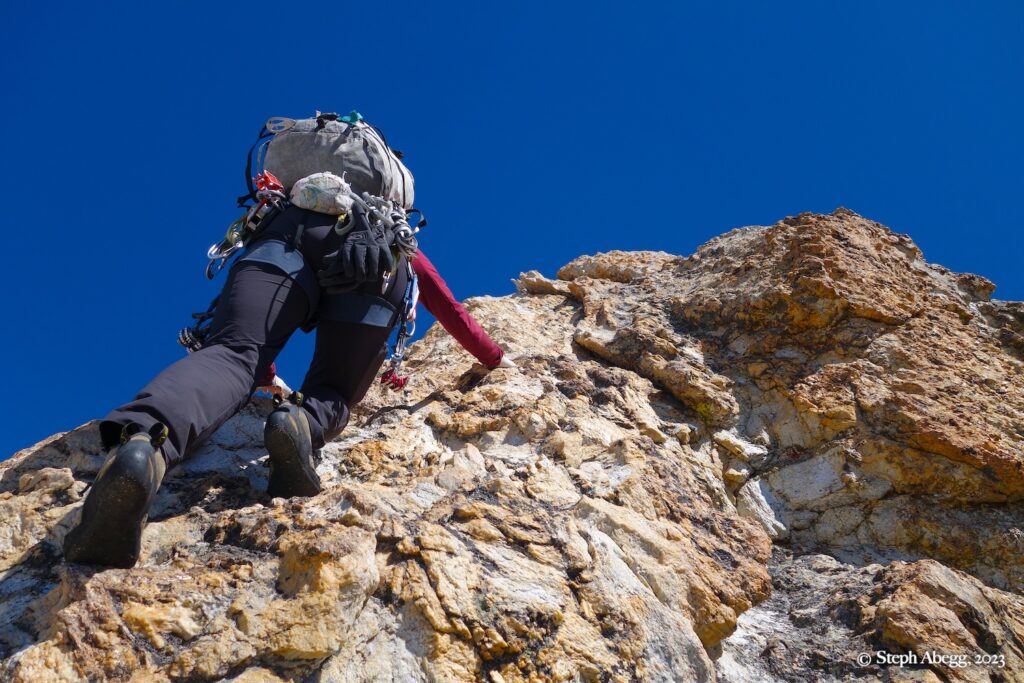My sister Jenny was in the Tetons for a month working remotely and exploring the area in her free time as her boyfriend Michael guided people up the Grand. It had been four years since I had last climbed in the Tetons (when I climbed the
South Buttress of Mt. Moran in July 2019), and three years since I had last seen Jenny (when she briefly came to visit me in Boulder when I had my knee injury). So Jenny and I planned a four day trip together. I drove up after work on a Friday, and we climbed
The Snaz (5.9-5.10+, 9p) on Cathedral Buttress (Saturday),
Do It For Doug (5.10c, 4p) and Exum Arete (5.10a, 3-6p) on Rock Springs Buttress (Sunday), worked/rested Monday morning and hiked to the Lower Saddle Monday afternoon, and climbed
The Complete Exum w/ Gold Face (5.10a) on The Grand Teton (Tuesday). I drove back to Estes Park on Wednesday, after putting in a full day working remotely from the library and Whole Foods in Jackson Hole. What a stellar 4 days of climbing and hanging out with my sister!
This page gives a trip report for our last day of climbing: the
Complete Exum w/ Gold Face (5.10a) on The Grand Teton. This is one of the great rock climbs of the Tetons. The Exum Ridge is easily identified from the Lower Saddle as the serrated skyline ridge that descends from the summit and foms the right wall of the broad gully above and northeast of the Lower Saddle. I had climbed the
Complete Exum in 2012 (trip report at bottom of this page), but Jenny had never climbed it. (For terminology: The
Upper Exum Ridge is the easier upper half of the ridge and can be accessed via a ledge system called Wall Street. The L
ower Exum Ridge is considerably steeper and more difficult. The entire ridge beginning from the Black Dike is referred to as the
Complete Exum Ridge.) Solid rock, interesting routefinding, and commanding position along the south ridge of the highest peak in the range combine to yield one of the classic ascents of North American climbing. So I was happy to climb it again. Plus, the weather looked great for it, sunny, relatively calm, and a low chance of thundershowers.
Jenny and I decided to do the four-pitch
Gold Face variation to the
Lower Exum Ridge. This variation ascends a section of very steep, golden rock out to the right of the Black Face of the standard
Lower Exum Ridge. It may be reached by a short descent east from the top of the second pitch of the
Lower Exum Ridge or by ascending the middle of three long ramps that angle up and left from the Black Dike.
We tossed around the idea of doing the climb car-to-car or with a camp at the Lower Saddle. We decided to camp at the Lower Saddle. It's always fun to spend a night in the mountains, and it meant we could get a longer night's sleep before the climb. Plus, Jenny's boyfriend Michael, an Exum guide, would be staying at the guide hut with some clients making a summit bid the same day as us, so we figured it would be nice to all be up there together. So after a morning of work on Monday, we packed up and hiked up to the Lower Saddle. We enjoyed an evening up high, and then on Tuesday we climbed the route.
We had a blast. We thought the
Gold Face variation to the
Lower Exum was excellent. We made good time, climbing the complete Exum Ridge in about 7 hours camp-to-camp. We were the only ones climbing the
Exum Ridge that day, likely since the snow/ice on the upper stretches of the mountain were disuading climbers. Aware of the conditions, we had brought aluminum crampons and lightweight ice axes on the climb; the crampons were essential, but we never felt the need for ice axes.
The following page gives an overlay, time stats, and plenty of photos from our climb of this classic North American route.

























































































































